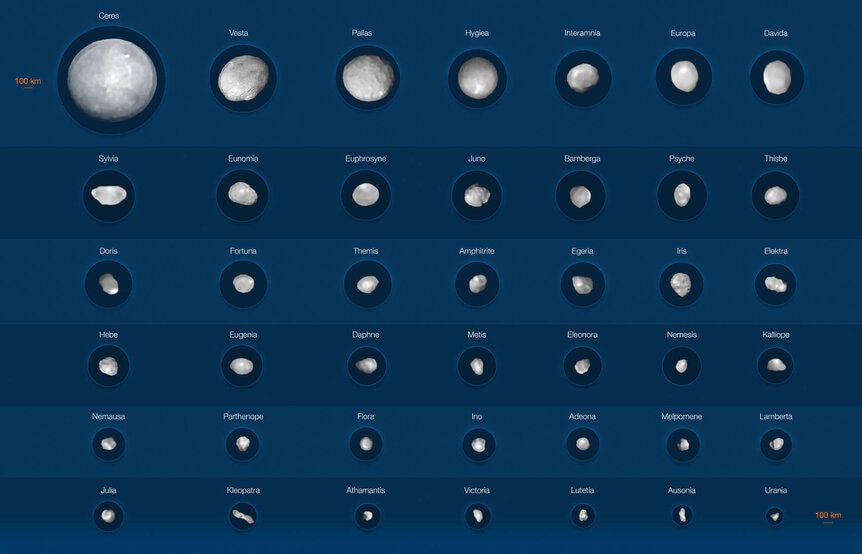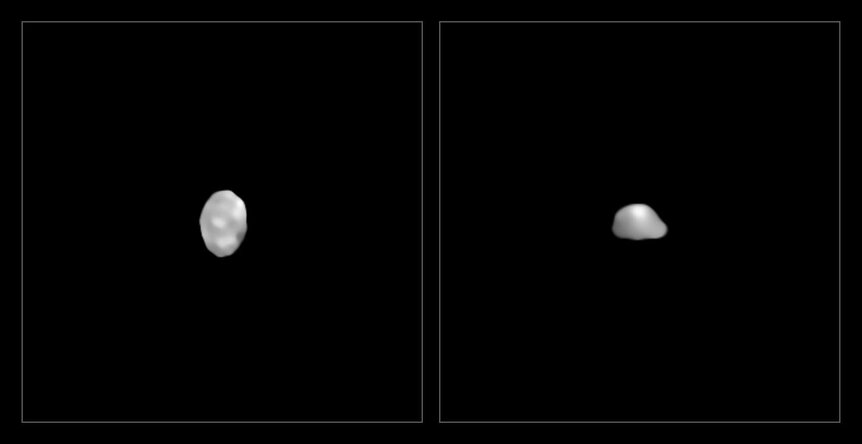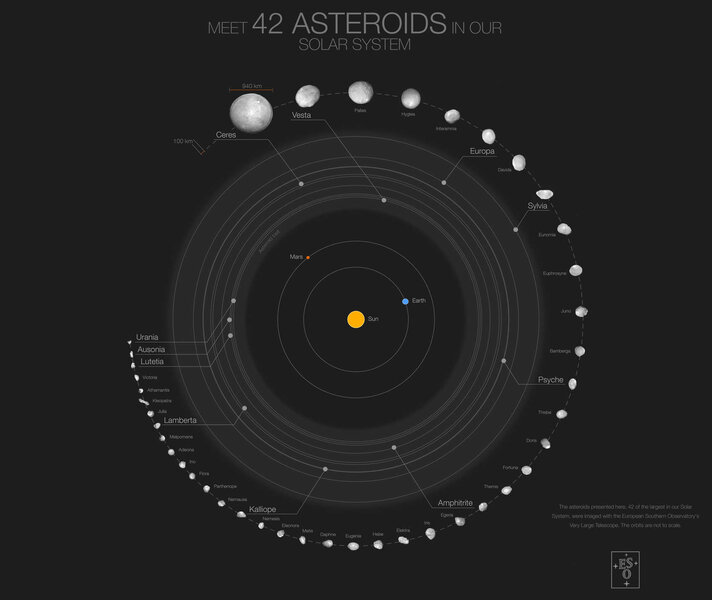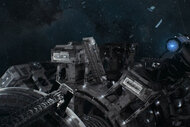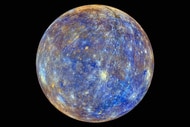Create a free profile to get unlimited access to exclusive videos, sweepstakes, and more!
Asteroids, the Universe, and Everything: Meet 42 space rocks
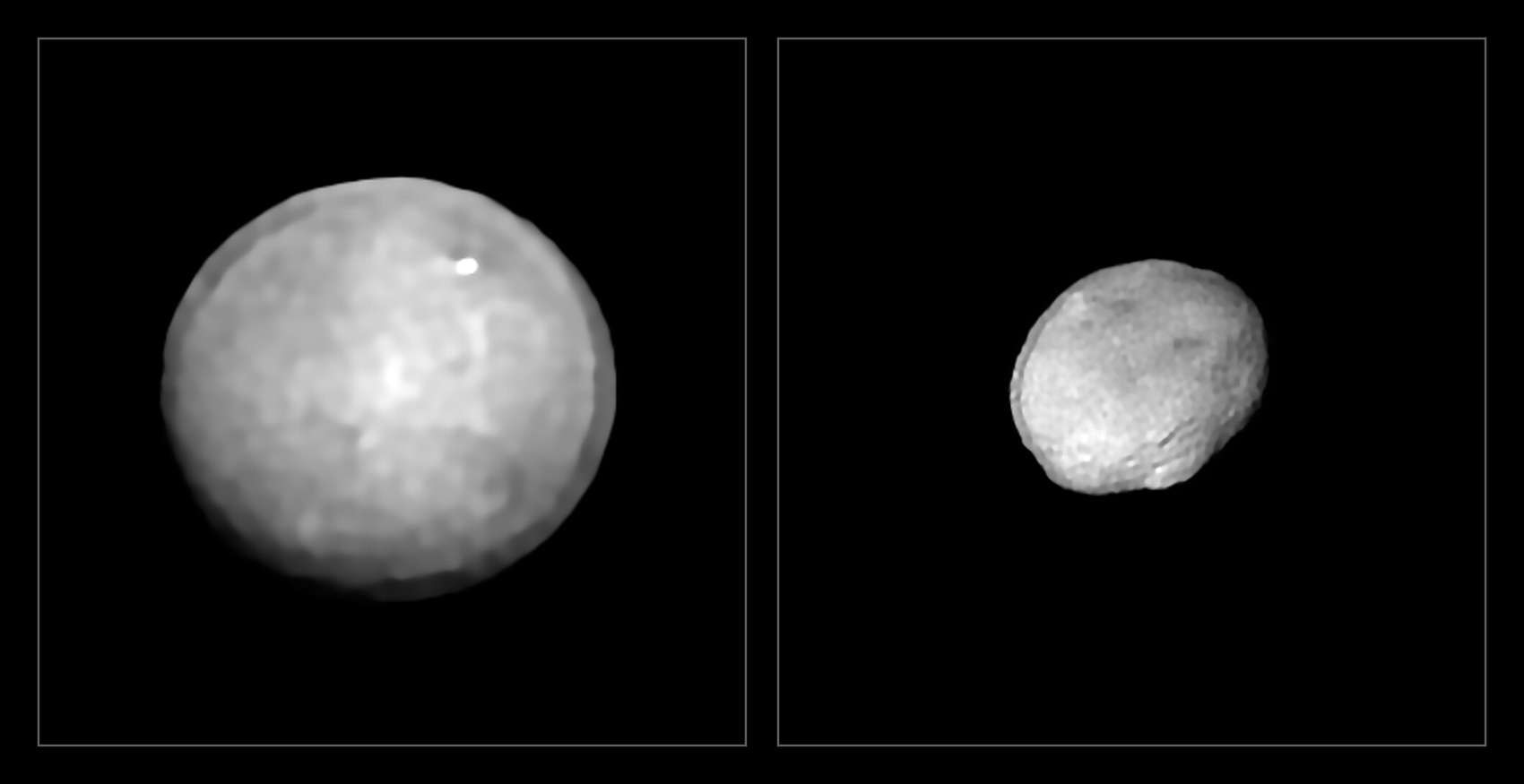
Between Mars and Jupiter in our solar system lies the Main Asteroid Belt, a region over 150 million kilometers across where most of the biggest asteroids lie. The first, Ceres, was discovered on January 1, 1801, and since then over a million more have been found. There may be a billion or more larger than 100 meters in size.
Because they’re far away and tend to be small, they appear as dots in telescopes — the name "asteroid" means "star-like." That’s been true for decades, centuries really, until we started to see asteroids up close via spacecraft or via radar.
Still, telescopes and cameras on Earth have improved massively in the past few decades, and now it’s possible to get resolved images of the biggest asteroids in the Main Belt. A team of astronomers has not done just that: Using the immense (8.2-meter) Very Large Telescope and the SPHERE/ZIMPOL instrument, they imaged 42* asteroids, some of the largest in the Belt.
Whoa. Some of these images have been released before (like Ceres, Vesta, and Hygiea) but most of these are new. They were able to get images of 20 out of 23 asteroids larger than 200 kilometers in diameter, and 39 that are larger than 100 km.
The overarching idea here was to better determine the sizes, shapes, densities, and evolutions of these asteroids. They observed each when Earth was roughly closest to the target, so that they appeared as big as possible. The target asteroid was then observed long enough to see most of its surface as it rotated, allowing its shape to be determined as well — some asteroids are round, but smaller ones tend to be elongated or lumpy or irregular.
Once that was done a volume could be calculated. The masses of these asteroids have been estimated (or directly measured in some cases), which allows for the density (the mass divided by volume) to be determined. That’s critical: Something mostly rock will have a density of about 2 grams per cubic centimeter, but if it’s icy that density will be lower, or if metallic higher. Just getting the density tells you a lot about the asteroid.
By examining these results they found some interesting things. For example, the overall densities of the asteroids were bimodal, or split into two factions. One group had densities less than about 2.2 g/cc, and the other higher than 2.7. The first group is likely made of rocky material mixed with ice, while the latter rock with metals. The lower density group tends to be darker than the denser ones as well; that is likely due to composition and structure on small scales. Higher density, brighter asteroids have lots of chondrules in them, spherical grains that were once molten and accumulated into the asteroid body. Lower density, darker asteroids have more fine-grained material that doesn’t reflect light well.
Other trends were apparent, too. For example, spherical asteroids rotated more slowly (taking longer than six hours) than elongated ones (less than 6 hours). Many asteroids aren’t solid monolithic bodies, but instead are more like rubble piles; probably all small asteroids are like that. Even larger asteroids have suffered catastrophic collisions in their past, so big that the asteroid was shattered and then reaccumulated under gravity. This would leave lots of empty spaces, voids, between pieces. It could also cause the resulting asteroid to spin more rapidly… and it’s also possible that asteroids that spin faster tend to get elongated due to centrifugal forces, since their cohesion is weaker.
Speaking of which, they observed several asteroids known to have moons, and these all (with one exception, Euphrosyne) are quite oblate and spin rapidly. It’s possible moons form as material is flung off, or were otherwise involved with the rapid spin of the parent body.
Their maps allow for crater identification as well, if they’re bigger than 25 – 75 km (depending on how far the asteroid was when observed; the smallest feature possibly seen is roughly 20 km across for more distant rocks). They found that denser asteroids had more visible craters than lower density ones, but this is unlikely to be real: Lower density asteroids tend to have flatter crater floors, and that makes them harder to see in observations like this. It’s much more likely cratering on all asteroids is about the same, but this would confirm that different types of asteroids will have differently shaped craters.
Many asteroids travel around the Sun on extremely similar orbits, and it’s thought that these all came from one parent body after one or more big collisions. They’re essentially shrapnel. Three of the asteroids observed — Flora, Hygiea, Euphrosyne — are the largest members of three such families, and are probably the biggest pieces left of their parent asteroids. All three of these asteroids are round, which is what you’d expect if a huge collision with another asteroid shattered them and they reaccumulated. So that’s nice to see.
By mapping these asteroids and looking at where they are in the Main Belt, it’s possible to start looking into their histories. Some low density ones are expected to have migrated inward from out past Neptune, where lower density icy bodies are common, and in fact many of the asteroids observed here may fit that origin. Examining where they are now and how they got there, we can better understand how the solar system has changed over the eons.
I’ll note that several of these asteroids (like Ceres, Vesta, and Lutetia) have been visited by spacecraft, so we have detailed images and even mass measurements for those, and the observations here agree with what was seen. That’s good to know! If you can get some ground truth that’s always helpful.
As time goes on we’ll visit more and more asteroids via spacecraft, but for now it’s a lot easier to observe them from Earth. It’s not exactly easy, but it does give a consistent database of information that can be used to group the asteroids via various characteristics and look for trends. And that’s the key here: Not what any individual asteroid is or does, but how they behave in general. That is how we unlock the mysteries of these no-longer-star-like objects, how we better understand what conditions were like when they formed, and how they’ve changed since.
*The press release for this paper was issued yesterday, which was the 42nd anniversary of the release of The Hitchhiker’s Guide to the Galaxy.
